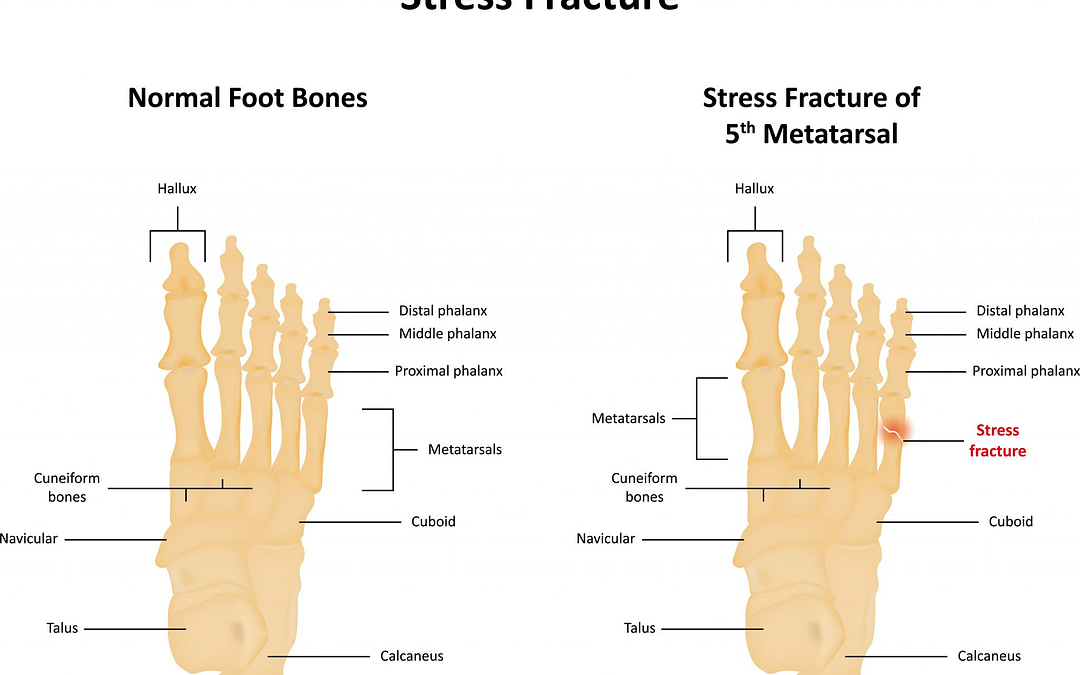Why are Stress Fractures Common in Athletes?
Stress fractures are an overuse injury that presents with small or tiny cracks in a bone. They tend to be more common in the lower limbs than the upper limbs because the weight-bearing bones found in the lower limb are at risk to repetitive forces and stress absorbed during activities. Stress fractures start when the muscles are already tired and fatigued and are unable to absorb more shock. The muscles will then transfer the increasing stress to the bone. The bones and supporting structures do not have enough time to heal the damage thus, tiny cracks develop.
The most common sites of stress fracture in the lower limbs are the metatarsals, particularly the second and third metatarsals. This is because these bones acquire the greatest impact when walking and running and are thinner than the other metatarsals. Another common area of injury is the tibia which is the longer of the two bones in the leg and absorbs more stress than the bone above (fibula).
Athletes who play sports which require repetitive running and jumping are vulnerable stress fractures and it is one of the most common sports injuries as well as in military recruits. In the military, stress fracture is also called march fracture.
The most common symptom of a stress fracture is pain which develops gradually and there is no other obvious sign of injury to the athlete (some cases may present with tenderness or swelling). Therefore, athletes continue to perform their usual activities such as training and practices without knowing that they already have an injury.
Treatment for Stress Fractures
In most cases, treatment of stress fractures includes rest and avoiding weight bearing activities. This form of treatment allows the bone to heal on its own and usually takes 6-8 weeks. For those who want to remain physically active during this period, training focused on the upper body should be substituted for lower body activities.
In rare cases, the bone may not heal on its own due to the severity of the injury or underlying biological factors. In these cases, a surgical procedure to pin the bone together and insert a bone graft into the fracture may be considered.
The most important aspect to healing properly from a stress fracture is consulting an orthopedic specialist at the first sign of injury so treatment can start immediately and further damage can be avoided.
High Mountain Orthopedics specializes in bone, joint and muscle injuries, including stress fractures. Dr. William Matareseand Dr. Tony Wanich have over 25 years of combined experienced treating orthopedic and sports injuries. Our practice uses a multi-disciplinary approach that includes physical therapy and activity modification. If surgery is necessary, our team utilizes the latest advancements in Minimally Invasive and Arthroscopic procedures to expedite the healing process. If you are suffering from a bone, joint or muscle injury – contact our offices today! We have locations in Wayne, Paramus and Englewood, NJ.

